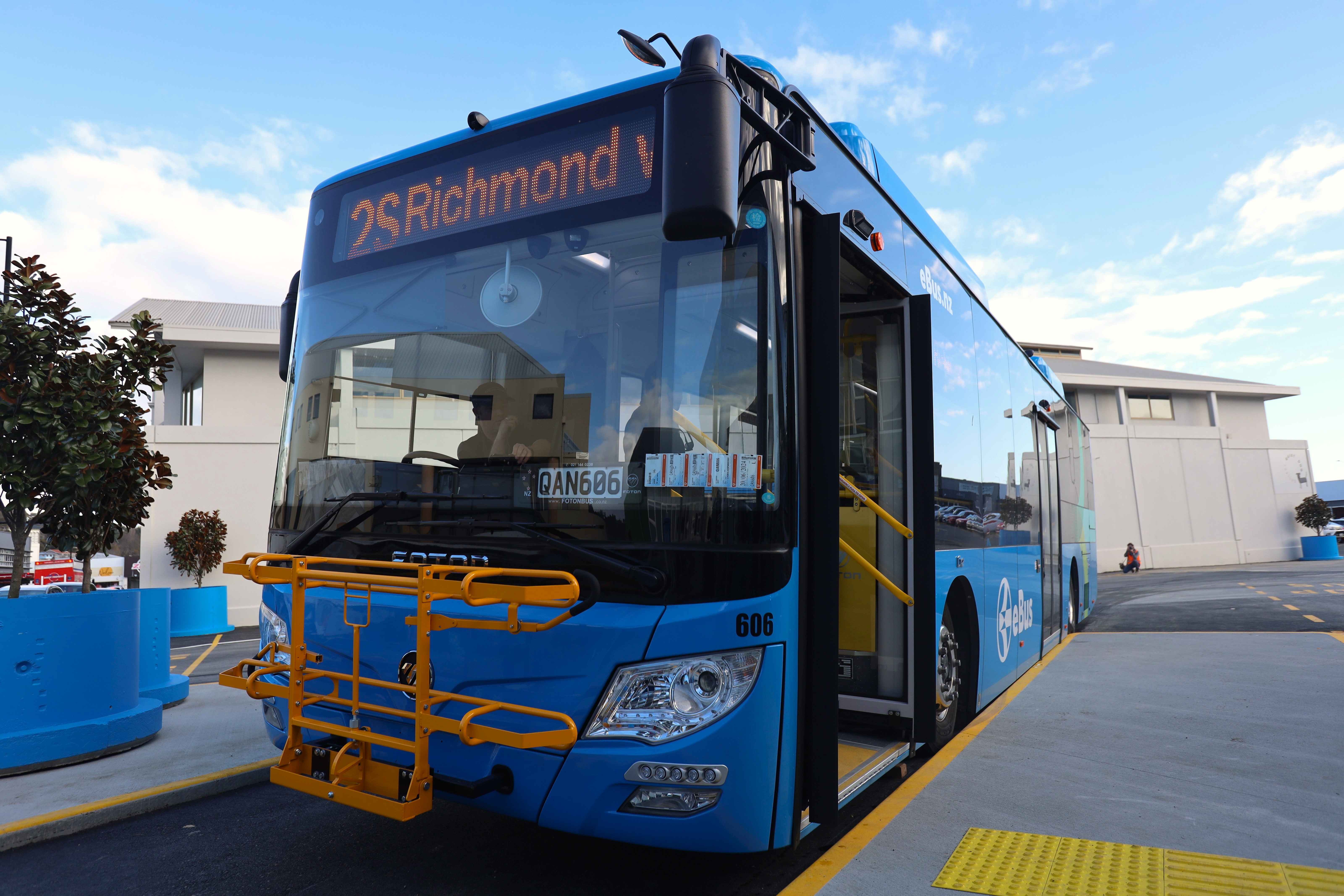A year of eBus: Looking in the rearview mirror and the road ahead


Patronage has more than doubled on the eBus when compared to the last year of the NBus service. Photo: Max Frethey.
The wheels on the eBus have rolled round and round on Nelson Tasman roads for over a year now.
People took more than 931,000 journeys on new service during its first 12 months, a 101 per cent jump compared to the year of its predecessor NBus.
The NBus's two routes covered 28km of road, but the expanded eBus network's six main routes account for almost 150km.
The new bus fleet, primarily consisting of electric vehicles, subsequently travelled more than 1.43 million kilometres over the last year.
Passenger journeys amid changing fares
Teenagers and adults were the most common passengers on the service, each demographic accounting for about 29 per cent of fares purchased on the region’s buses in the 12 months up to May.

Fares for children aged 5–12 also accounted for 12 per cent of sales – the fourth most purchased fare type.
This is despite an “immediate” 60 per cent drop in child passengers from May 2024, when they lost the ability to ride the bus for free with the end of the Government’s fare subsidy.
Children aged 5–12 now pay half-price fares.
At the time, parents called the end of the subsidy a “worry” during a cost-of-living crisis.
But Tasman councillor Barry Dowler suggested at a Friday joint transport committee meeting that, from his own observations, the drop could be attributed to children who caught the bus just to travel a few hundred metres down the road to avoid walking.
However, patronage still increased from April to May despite the subsidy being lost in between.
Patronage numbers also weren’t significantly impacted when Bee Card fares were raised by 5 per cent from 1 July, with passenger numbers climbing by about 5000 between June and July.

Just over two-thirds of all trips occurred on one of the two Richmond–Nelson routes with overflow buses on peak times enabling another 20,000 journeys.
The bus network’s expansion to the Tasman towns of Motueka and Wakefield have been well-received, with those two routes cumulatively accounting for about 70,000 journeys.
The Motueka route also had to have an overflow bus added during the school holidays.
Tasman Mayor Tim King said in a statement that the eBus had a “massive” impact on the district and the patronage numbers were a “testament” to its importance for residents.
“You can see a real appetite for public transport in Tasman.”

A look in the rearview mirror
Despite its successes, it’s been a bumpy road at times – both literally and metaphorically – for the eBus.
With the low demand for the Stoke OnDemand bus – just 116 trips a month, effectively costing almost $215 each – the service was scrapped at the end of April.
The electric buses are also heavy and destroyed parts of the road network – particularly around bus stops – resulting in $400,000 in damages for Nelson roads.
Jenner Road was perhaps the worst affected road, needing almost $60,000 of repairs after it was “smashed up” and resulted in the bus route being diverted elsewhere.
But less than a fortnight later, with the bus now diverted up Toi Toi Street, one of the vehicles was involved in a minor crash going around a roundabout on the new route.
Total overspend of the first year ballooned to more than $1 million, though a large portion were one-off costs relating to the service’s establishment.

The road ahead
The service will be reviewed now that the first year is complete.
The first phase is hoped to provide Waka Kotahi with the assurance it needs to continue funding half of the service at the current level for the 2025/26 and 2026/27 financial years.
The estimated spend on the service for 2025/26 will be $5.6 million, with the transport agency hoped to cover 51 per cent, with the remainder being 75 per cent funded by Nelson City Council and 25 per cent by Tasman District Council.
Waka Kotahi has assured council staff that the requested funding has been set aside, and will be released following a positive review.
The review’s second phase will consider the implications for the service if the transport agency doesn’t contribute the same level of funding, while the third will identify potential changes to the service.
Changes could be made immediately after the review, but the Nelson council’s group manager infrastructure cautioned elected members at Friday’s meeting against making quick decisions.
“We have a tendency to try and make things better, sometimes, especially with [public transport], to our own detriment,” Alec Louverdis said.
“It’s easy to do things, but it’s harder to claw them back. I just stress that we need to know exactly what we’re dealing with.”

Additional costs are also on the horizon with about another $550,000 of costs for the service in operating costs when Road User Charges are applied to electric vehicles from December 2025, though these have already been funded through council plans.
The end of 2025 is also slated to see the new National Ticketing Solution, Motu Move, rolled out on the eBus which would allow passengers to tag on and off the bus with a credit or debit card, without needing a Bee Card or cash.
Tasman District Council is also proposing to expand the Motueka and Wakefield routes to include weekends in 2026, “subject to a review of weekday patronage and demand”.
The trial on allowing muzzled dogs on the eBus was also extended on Friday for the length of the service’s review, which is expected to be concluded by March 2025.
“Our goal is to further grow the service to achieve a million journeys a year,” Nelson Mayor Nick Smith said.

